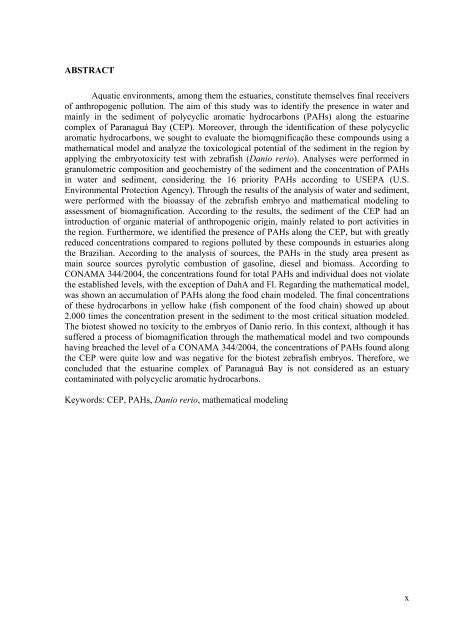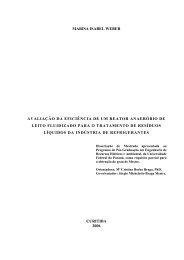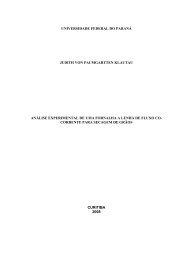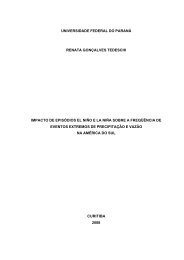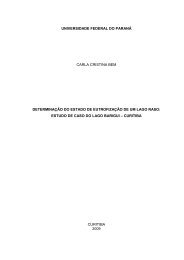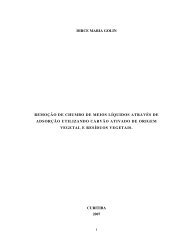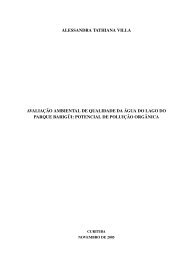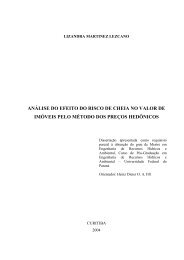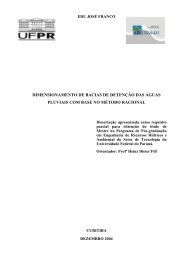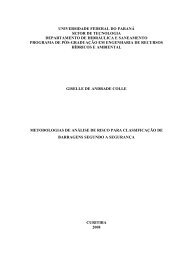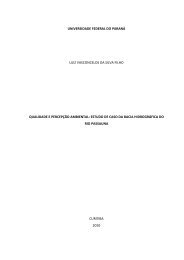Avaliação da Presença, Toxicidade e da PossÃvel Biomagnificação ...
Avaliação da Presença, Toxicidade e da PossÃvel Biomagnificação ...
Avaliação da Presença, Toxicidade e da PossÃvel Biomagnificação ...
You also want an ePaper? Increase the reach of your titles
YUMPU automatically turns print PDFs into web optimized ePapers that Google loves.
ABSTRACT<br />
Aquatic environments, among them the estuaries, constitute themselves final receivers<br />
of anthropogenic pollution. The aim of this study was to identify the presence in water and<br />
mainly in the sediment of polycyclic aromatic hydrocarbons (PAHs) along the estuarine<br />
complex of Paranaguá Bay (CEP). Moreover, through the identification of these polycyclic<br />
aromatic hydrocarbons, we sought to evaluate the biomqgnificação these compounds using a<br />
mathematical model and analyze the toxicological potential of the sediment in the region by<br />
applying the embryotoxicity test with zebrafish (Danio rerio). Analyses were performed in<br />
granulometric composition and geochemistry of the sediment and the concentration of PAHs<br />
in water and sediment, considering the 16 priority PAHs according to USEPA (U.S.<br />
Environmental Protection Agency). Through the results of the analysis of water and sediment,<br />
were performed with the bioassay of the zebrafish embryo and mathematical modeling to<br />
assessment of biomagnification. According to the results, the sediment of the CEP had an<br />
introduction of organic material of anthropogenic origin, mainly related to port activities in<br />
the region. Furthermore, we identified the presence of PAHs along the CEP, but with greatly<br />
reduced concentrations compared to regions polluted by these compounds in estuaries along<br />
the Brazilian. According to the analysis of sources, the PAHs in the study area present as<br />
main source sources pyrolytic combustion of gasoline, diesel and biomass. According to<br />
CONAMA 344/2004, the concentrations found for total PAHs and individual does not violate<br />
the established levels, with the exception of DahA and Fl. Regarding the mathematical model,<br />
was shown an accumulation of PAHs along the food chain modeled. The final concentrations<br />
of these hydrocarbons in yellow hake (fish component of the food chain) showed up about<br />
2.000 times the concentration present in the sediment to the most critical situation modeled.<br />
The biotest showed no toxicity to the embryos of Danio rerio. In this context, although it has<br />
suffered a process of biomagnification through the mathematical model and two compounds<br />
having breached the level of a CONAMA 344/2004, the concentrations of PAHs found along<br />
the CEP were quite low and was negative for the biotest zebrafish embryos. Therefore, we<br />
concluded that the estuarine complex of Paranaguá Bay is not considered as an estuary<br />
contaminated with polycyclic aromatic hydrocarbons.<br />
Keywords: CEP, PAHs, Danio rerio, mathematical modeling<br />
x


